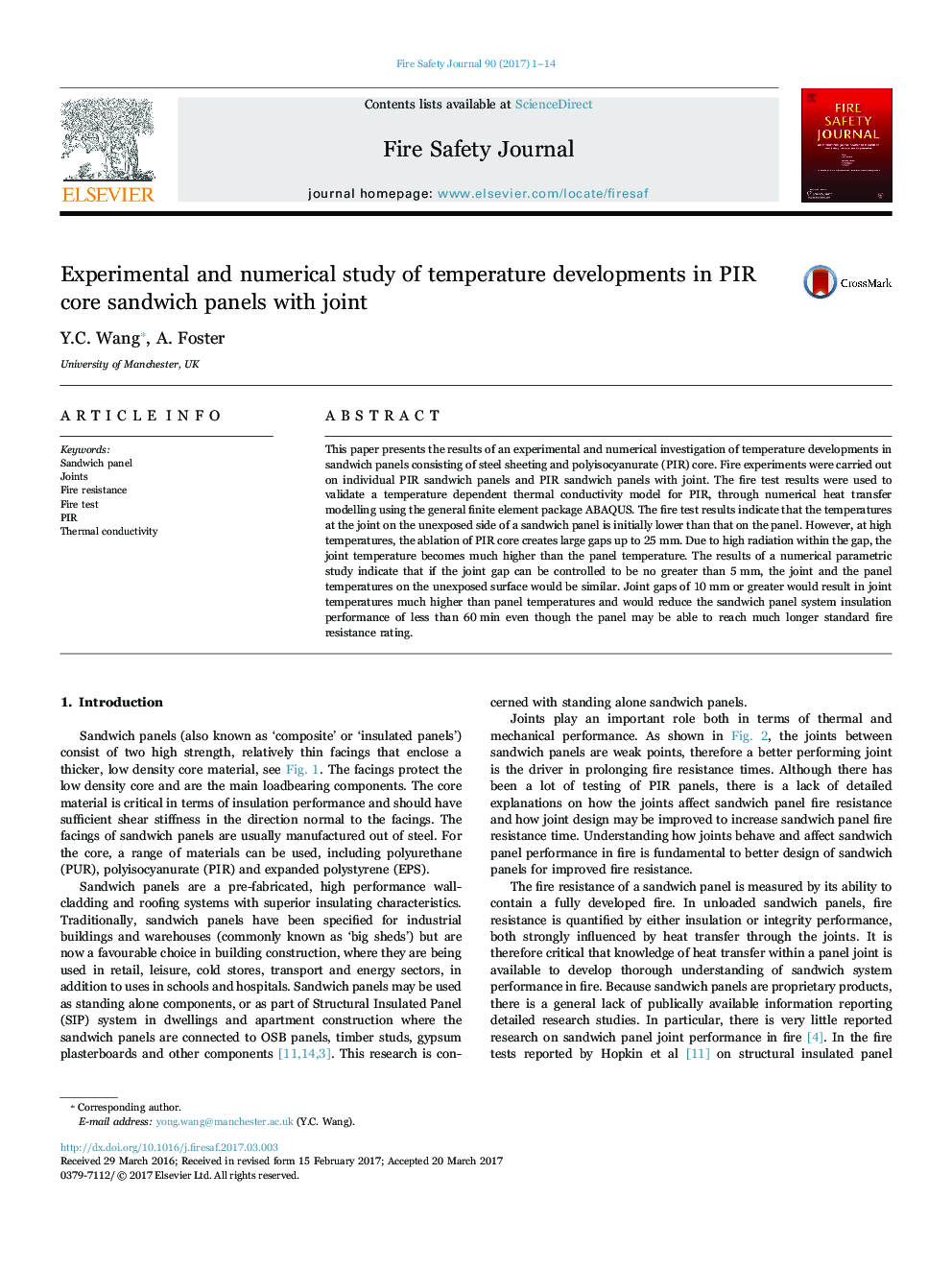| Article ID | Journal | Published Year | Pages | File Type |
|---|---|---|---|---|
| 4920854 | Fire Safety Journal | 2017 | 14 Pages |
Abstract
This paper presents the results of an experimental and numerical investigation of temperature developments in sandwich panels consisting of steel sheeting and polyisocyanurate (PIR) core. Fire experiments were carried out on individual PIR sandwich panels and PIR sandwich panels with joint. The fire test results were used to validate a temperature dependent thermal conductivity model for PIR, through numerical heat transfer modelling using the general finite element package ABAQUS. The fire test results indicate that the temperatures at the joint on the unexposed side of a sandwich panel is initially lower than that on the panel. However, at high temperatures, the ablation of PIR core creates large gaps up to 25Â mm. Due to high radiation within the gap, the joint temperature becomes much higher than the panel temperature. The results of a numerical parametric study indicate that if the joint gap can be controlled to be no greater than 5Â mm, the joint and the panel temperatures on the unexposed surface would be similar. Joint gaps of 10Â mm or greater would result in joint temperatures much higher than panel temperatures and would reduce the sandwich panel system insulation performance of less than 60Â min even though the panel may be able to reach much longer standard fire resistance rating.
Related Topics
Physical Sciences and Engineering
Engineering
Civil and Structural Engineering
Authors
Y.C. Wang, A. Foster,
